Home Projectors
Choosing the best Home Projector.
What brightness should I select?What is the best resolution?
Do I have to ceiling mount my projector?
What inputs or inbuilt smarts do i need?
How do I set up my Audio?
LED, Laser, or Lamp Projector?
What projectors do you recommend for home theatre?

The best brightness level for your home projector will depend on the use. Some home projectors are used for everyday use in a living area and will require more brightness of around 4000 lumens. In a dimmed down home theatre room you would only need 1000 to 2000 lumens brightness and still produce a beautiful picture but maximise colour accuracy.

What is the best resolution?
[top]The two main resolution types at 1080p and 4K. 1080P projectors are still the mainstream projector with a good amount of detail and image quality. But we are now seeing 4K taking a lead role for general entertainment, gaming, and theatre uses. It provides a whopping four times more pixels for a more detailed clear and sharp image. BUT you will only really see the big image quality boost if you are feeding it 4K content. Whether it is a 4K UltraHD disc, Foxtel 4K channels, or a 4K Netflix streaming subscription; feeding the 4K projector the right resolution will give you the full benefit.
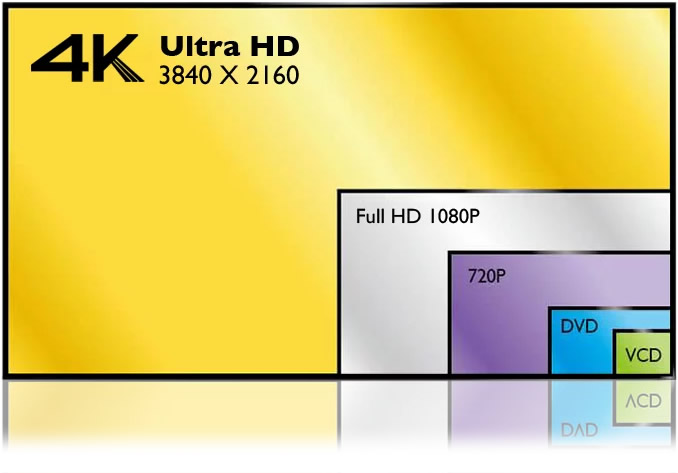

Do I have to ceiling mount my projector?
Not necessarily; there are many types of home projector setups nowadays:
[top]Ceiling Mount Home Projector
The traditional ceiling installation is still the ideal way to setup the projector with the projector out of the way hard wired in. This would typically be connected in to an amplifier with a big speaker system which would in turn be connected to other AV components like games consoles bluray players etc.
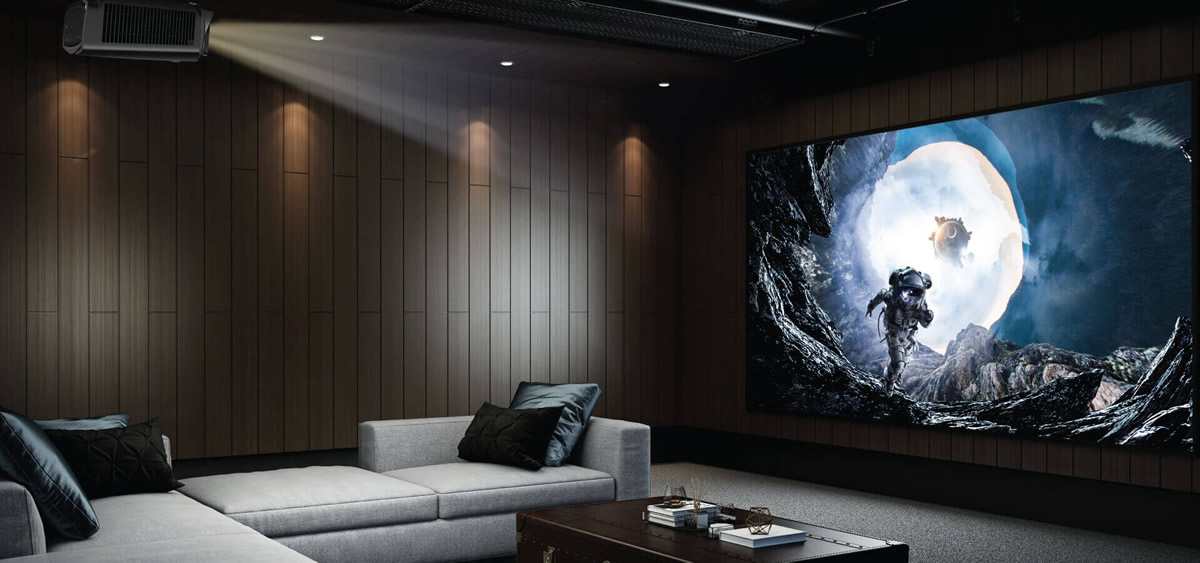
UST Home Projector
But there are now UST projectors that allow for a no installation setup. They just get placed on a TV unit at the front of the room and project a massive image from near point blank range. This saves you wiring and ceiling mounting the projector and can run audio with its own speakers or be connected to larger scale sound for the big theatre experience.
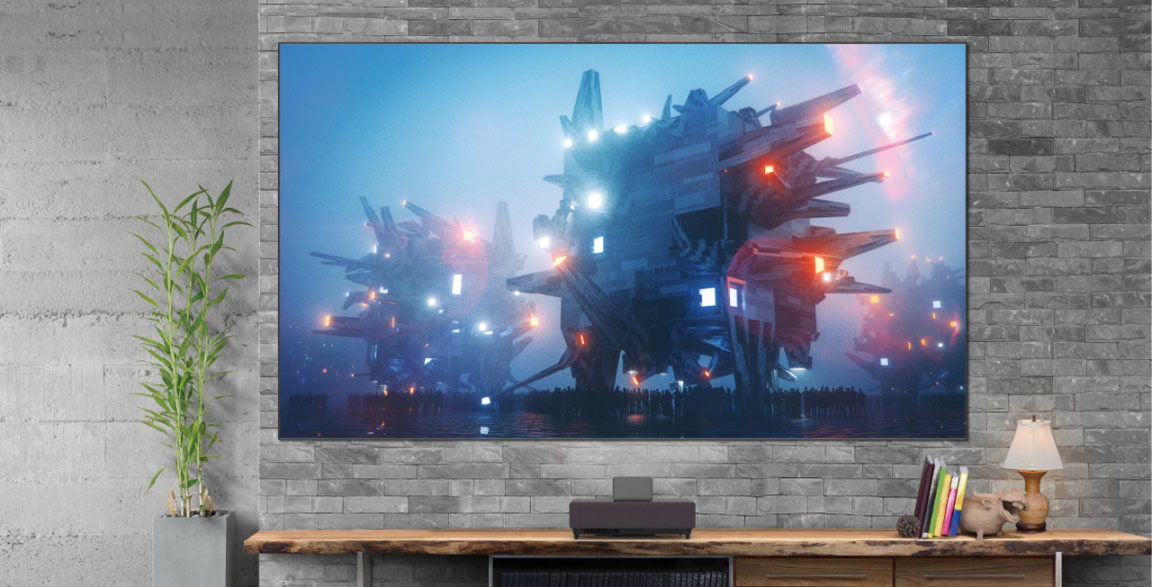
Coffee Table Home Projector
Finally there I a new trend of a more informal projector on the coffee table able to be packed away when not in use or used more as a portable setup most popular in apartments to get a massive picture in an easier more compact format.
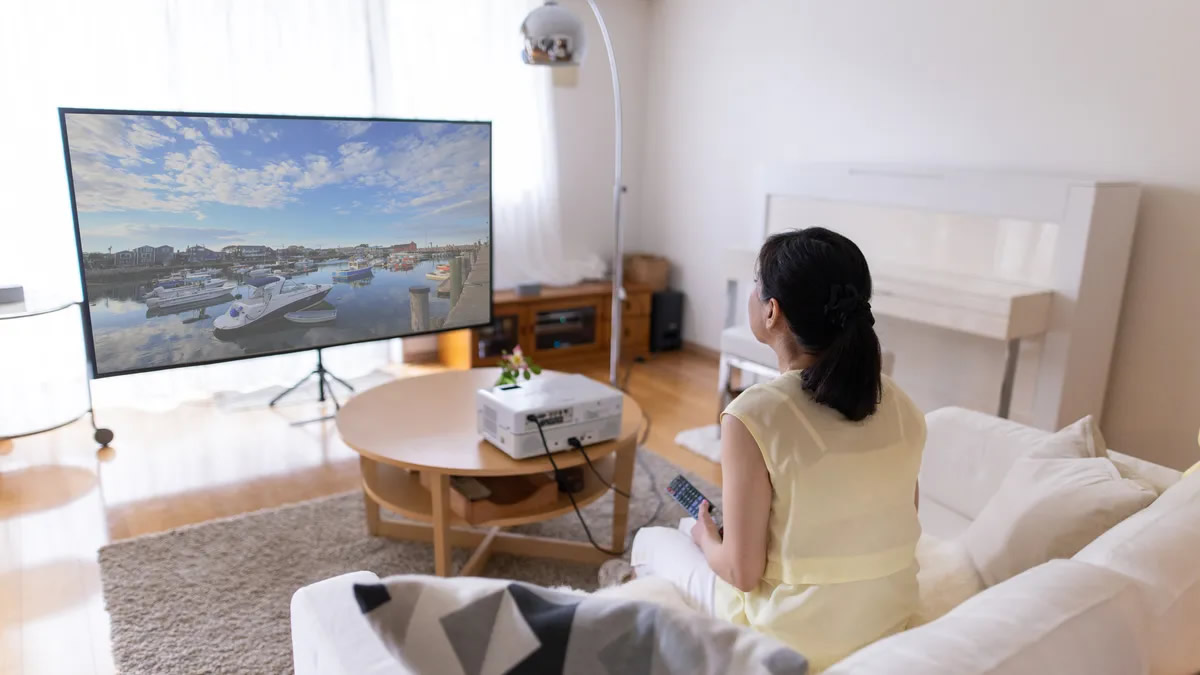
What inputs or inbuilt smarts do i need?
[top]Inputs connections on home projectors has become much simpler. HDMI has literally taken over as higher resolution pictures have become more popular. So essentially whether you are connecting a PlayStation, an Apple TV, or Blu-ray player the projector should have HDMI inputs.
Inbuilt smarts are a relatively new feature to hit projectors. Essentially a small computer inbuilt typically running an Android TV operating system. These connect to your house Wifi and allow you to stream free to air TV programs from 10play, 7plus, 9Now, ABC iview, and SBS on demand. Also they can play paid streaming services like Disney +, AppleTV, Paramount+, and depending on the inbuilt system some can play Netflix or Kayo. On some systems Netflix and Kayo is not available but you can always hook in an inexpensive Amazon Fire stick into the HDMI to add these in or even to upgrade a regular non smart projector to have all these features.
How do I set up my Audio?
[top]There are many ways to setup the audio side of your home projector.
Big Theatre Speakers
The big audio 5.1 or 7.1 channel setup is the ultimate audio quality usually more popular in a dedicated home theatre room. These can be inbuilt into the walls and ceiling for a cleaner look or feature the big column speakers for the powerful top quality cinema sound.

Sound Bar
A simplified sound bar setup is quite popular in living rooms and areas where the larger theatre speaker setup would be inconvenient. These can still be quite powerful and in some of the higher end models can have rear speakers added on for a more immersive surround sound without all the cabling of a big surround sound installation.
Something to look out for when choosing a sound bar is to make sure there are multiple HDMI inputs into the sound bar and one HDMI output. Some sound bars will only have one HDMI input going into it which will make connection tricky. It would restrict you to inbuilt smart functions in the projector if it has ARC (audio return channel) capability.

Inbuilt Audio
While not able to shake the walls inbuilt audio has come a long way. With many projectors now featuring third party speakers for clearer audio quality like Harman Kardon or Yamaha the inbuilt speaker setup is the most portable and easy. This sort of setup can always be upgraded down the track.
Something to look out for if you might be upgrading the audio down the track is a decent audio output. Preferably ARC or eARC HDMI where the projector could send out audio to a sound bar if you wanted a more powerful setup.
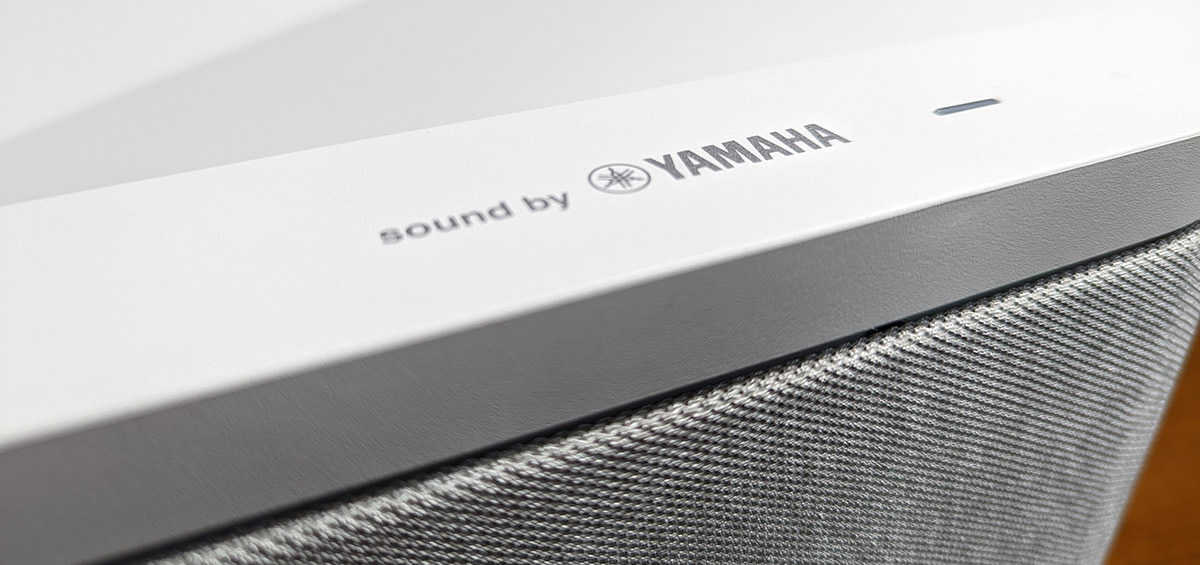
Projectors have traditionally been illuminated with a high brightness lamp. This technology is in general the cheaper option with a decent lamp life ranging from 5,000 to 15,000 hours depending on running mode, and fairly cheap replacement being available. So even with pretty heavy use quite a good option.
The newer technologies to the projector market are LED and Laser. These both offer a massive boost in lifespan typically 20,000 hours and above but generally have a higher initial buy price. In general LED based projectors are not as bright as their Laser counterparts but will offer a better colour accuracy.
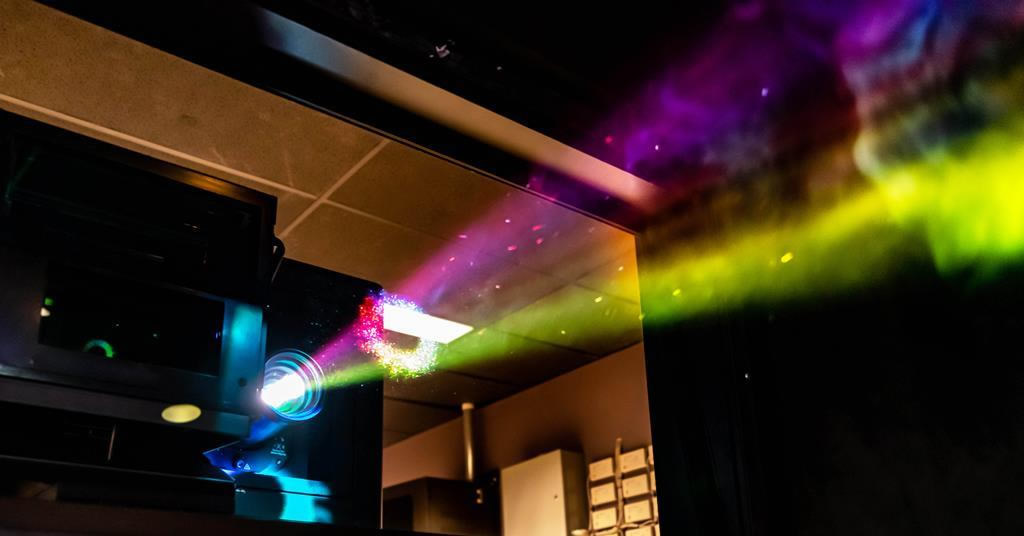
What projectors do you recommend for home theatre?
[top]We have some of our favourite home projector recommendations below. We know it can be difficult to pick the best one for you so if you need assistance please send us an email with your requirements, we are happy to help.
Home Projector Recommendations
Wanbo DaVinci 1 Pro
1080p Full HD LED
Entertainment Projector

- Free Delivery!
- 600 ANSI Lumens
- 2.8kg Weight
- Android 11.0 Inbuilt
- Wireless Streaming
- Bluetooth Audio 5.0
- 2x 8W Speakers
Wanbo Mozart 1 Pro
2025 Edition 1080p LED
Entertainment Projector

- 1200 ANSI Lumens
- 90% DCI-P3 Colour
- Premium Bass Woofer
- 4K & HDR Compatible
- 4K App Support
- 3.3kg Weight
- Android 11.0 Inbuilt
- Wireless Streaming
- Bluetooth Audio 5.0
Optoma HD28e
1080p Full HD
Home Projector
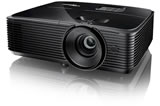
- 3800 ANSI Lumens
- 30,000:1 Contrast
- Best Under $1k!
ViewSonic PX701-4K
2160p 4K
Home Projector

- 3200 ANSI Lumens
- 12,000:1 Contrast
- Fast Gaming Mode
Optoma HD39HDR
1080p Full HD
Home Projector

- 4500 ANSI Lumens
- 50,000:1 Contrast
- Fast Gaming Modes
ViewSonic PX749-4K
2160p 4K
Home Projector

- 4000 ANSI Lumens
- 12,000:1 Contrast
- Fast Gaming Mode
- Xbox Certified
- Harman-tuned Speaker
Optoma UHD35+
2160p 4K
Home Projector

- 4000 ANSI Lumens
- 1,200,000:1 Contrast
- Fast Gaming Mode
Epson EH-TW6250
2160p 4Ke
Home Smart Projector

- 2800 ANSI Lumens
- Smart Apps Inbuilt
- Bluetooth (in app only)
- Lens Shift + Big Zoom
Epson EH-TW7100
2160p 4Ke
Home Projector

- 3000 ANSI Lumens
- 100,000:1 Contrast
- Low Fan Noise
- Lens Shift + Big Zoom
Optoma UHD55
2160p 4K
Home Projector

- 3600 ANSI Lumens
- 1,200,000:1 Contrast
- DCI-P3 Colour
- Fast Gaming Mode
- Smart USB Media Player
BenQ TK710
2160p 4K Laser
Home Projector

- 3200 ANSI Lumens
- 600,000:1 Contrast
- REC709 Colour
BenQ TK710STi
2160p 4K Laser
S/Throw Home Projector

- 3300 ANSI Lumens
- 600,000:1 Contrast
- REC709 Colour
- Smart Media Player
- Short Throw
Optoma Wave 130RK
2160p 4K Laser
Home Projector

- 4000 ANSI Lumens
- 2,300,000:1 Contrast
- 98% REC.709 Colour
- Fast Gaming Mode
BenQ X3100i
2160p 4K LED
Home Projector
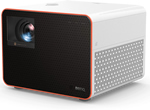
- 3300 ANSI Lumens
- 600,000:1 Contrast
- 100% DCI-P3 Colour
- Fast Gaming Mode
- Android 11 Inbuilt
ViewSonic V57-4K
2160p 4K RBG Laser
Home Projector
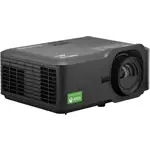
- 5200 RGB Laser Lumens
- 3,000,000:1 Contrast
- Triple Laser
- 100% BT.2020 Colour
- 2025 Projector of the Year
ULTRA SHORT-THROW LASER PROJECTOR RECOMMENDATIONS
Epson EH-LS650B
2160p 4K Laser
UST Home Projector

- 3600 ANSI Lumens
- 2,500,000:1 Contrast
- Ultra Short Throw
- Android TV Inbuilt
Epson EH-LS800B
2160p 4K Laser
UST Home Projector

- 4000 ANSI Lumens
- 2,500,000:1 Contrast
- Ultra Short Throw
- Android TV Inbuilt